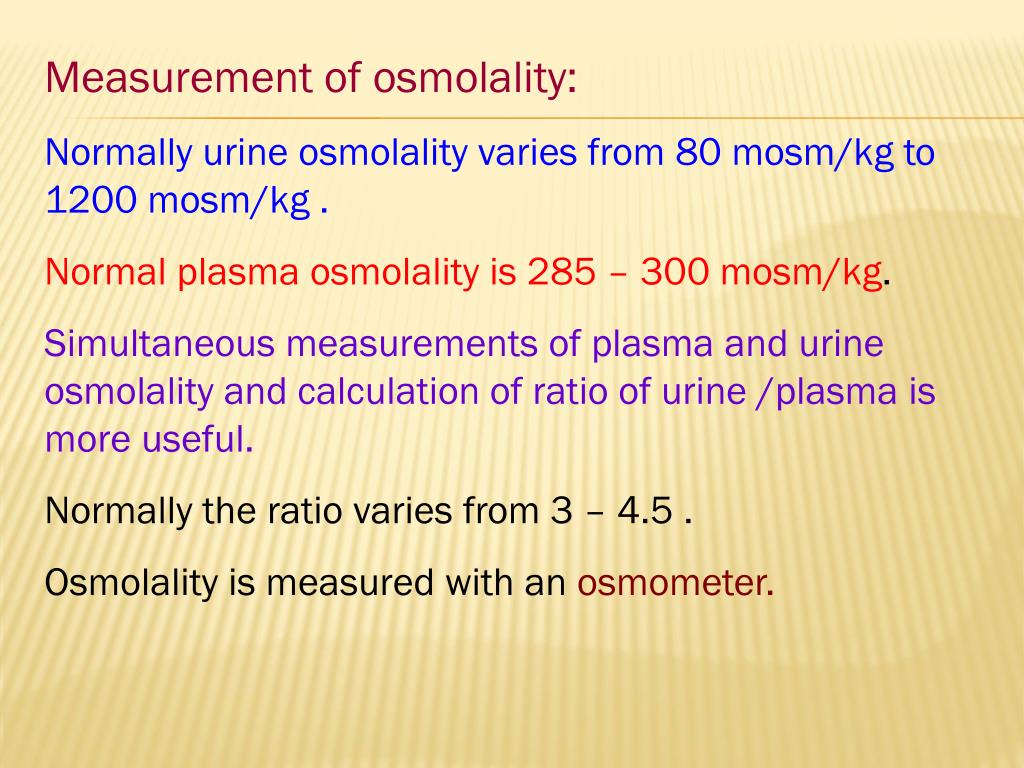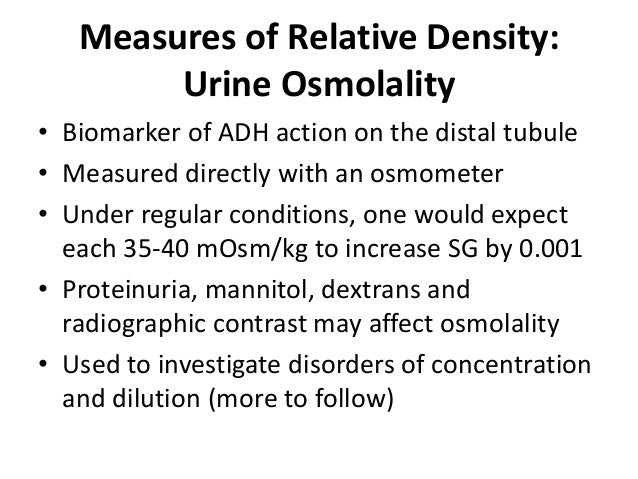

All samples were analyzed for concentrations of sodium, potassium, and osmolality at the certified clinical chemistry laboratory at Karolinska University Hospital in Solna, Stockholm, Sweden, on the same day as the urine sample was delivered. The urine color was graded immediately by comparing the samples to a urine color chart (available at. The questionnaire could be tracked to the results of the urine and blood analyses, but could not be linked to any individual volunteer. Participation was prohibited during ongoing menstruation. The purpose of the blood analyses was to identify possible correlations between renal water conservation, as evidenced by the urine analysis, and plasma osmolality and a number of water-retaining hormones that act on the kidneys.Īll participants completed an anonymous questionnaire that collected information about gender, age, height, body weight, time of last fluid intake, time when the urine sample was taken, existing diseases, regular medications (if any), and time of last menstruation (if present).

Fifty of the volunteers also agreed to provide blood samples for hormonal analysis at the same time. They were instructed not to ingest any fluid within two hours prior to the sampling to allow the urine to reflect the steady-state situation. The volunteers were asked to provide two fresh 10 ml spot urine samples at the Research Unit during a normal working day. In addition, 50 of these workers provided blood samples for analysis of plasma osmolality and the concentrations of water-retaining hormones. For this purpose, urinary analysis was performed on 300 hospital workers. The hypothesis was that fluid retention consistent with moderate dehydration is as common in the general population as was previously found in clinical patients. These data would be a useful reference for assessment of fluid retention in hospital patients. The aim of the present observational study was to examine in greater detail the frequency of fluid retention in the general population and to search for a possible hormonal reason. These observations suggest that water conservation could be a common trait in the general population. Moreover, concentrated urine was found in 36% of on-call nurses and doctors.

However, one third of 57 healthy subjects had high urinary concentrations of waste products even before performing recreational sports. Recent studies indicate that fluid retention is relevant to hospital care and even impairs health-related outcomes. Urine analysis could also be potentially useful in hospital patients. The medical importance of chronic moderate dehydration has not been thoroughly investigated, whereas severe dehydration has undisputed effects on health by reducing physical and intellectual performance. This concentration process can be prevented by appropriate replacement of the body water lost during exercise. The loss of body water caused by physical activity causes the kidneys to conserve (retain) water, thereby raising the specific gravity of the urine, increasing the osmolality and the creatinine concentration, and causing darkening of the urine color.

One method developed in sports medicine is based on the concept that high urinary concentrations of metabolic waste products indicate dehydration. Moderate dehydration is a difficult condition to detect in clinical medicine.


 0 kommentar(er)
0 kommentar(er)
